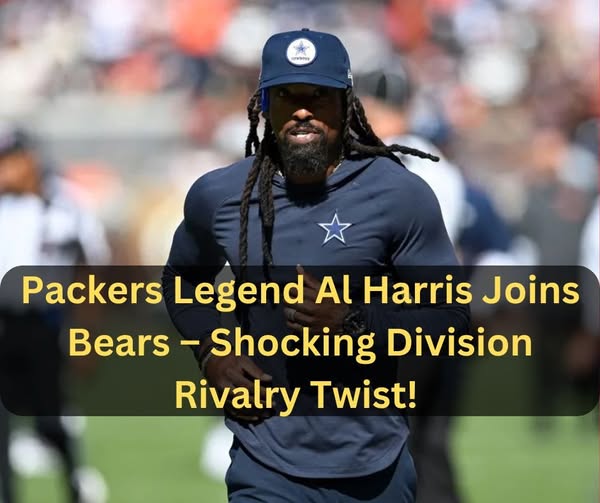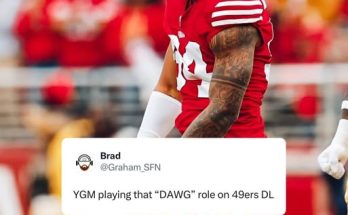Certainly! Here’s a 1500-word article on Harris’s tenure as assistant head coach and defensive backs coach for the Dallas Cowboys, written in a fluid, engaging narrative style without subheadings:
When tracing the legacy of influential coaches in the National Football League, it’s often easy to get caught up in the limelight of head coaches and franchise leaders. However, the scaffolding behind a team’s success is often built by those whose names may not appear in postgame headlines. Among such integral figures stands Harris, who served as assistant head coach and defensive backs coach for the Dallas Cowboys—a tenure marked by tactical brilliance, mentorship, and a steadfast dedication to excellence that quietly but powerfully shaped the team’s defensive identity.
Harris joined the Cowboys during a transitional era, a period when the team was navigating the delicate balance between rebuilding and contending. His arrival was met with optimism from those who understood the league’s intricate dynamics. Known for his cerebral approach to the game, Harris brought with him a wealth of experience both as a player and coach, which allowed him to connect with his athletes on a level few others could. From the outset, he demonstrated a keen understanding not only of Xs and Os but of people, and this would prove to be his most valuable asset.
In the high-stakes environment of the NFL, the secondary is often the last line of defense—and under Harris’s guidance, it became a source of pride for the Dallas Cowboys. He inherited a defensive backs unit that had shown flashes of talent but struggled with consistency. Rather than attempting to overhaul the system, Harris focused on refinement, maximizing the individual strengths of each player. He implemented nuanced schemes tailored to his personnel, relying on versatility and adaptability over rigidity. Harris believed in empowering his players to make smart, instinctual decisions on the field. He drilled fundamentals with surgical precision—footwork, eye discipline, and route recognition became second nature to his unit. He emphasized the value of pre-snap reads and mental preparation, making his defensive backs not just athletes, but students of the game.
One of Harris’s most profound impacts was his ability to develop young talent. Under his tutelage, several young defensive backs grew from raw prospects into cornerstone contributors. He had a gift for identifying potential and nurturing it patiently, often spending extra hours in the film room with his players, breaking down footage frame by frame, explaining not just what to do, but why. This educational approach created a culture of accountability and trust. Players knew that Harris was not merely coaching them for the next game, but equipping them with tools for their entire careers.
As assistant head coach, Harris’s responsibilities extended beyond the defensive backs room. He served as a bridge between the coaching staff and the players, often tasked with navigating the day-to-day nuances that arise within a high-performance locker room. His calm demeanor and measured voice provided a sense of stability. He was the kind of coach who could deliver tough truths without alienating his players, and his opinion carried weight in strategy meetings and sideline discussions alike. Head coaches valued his insights, not only for their technical merit but for the measured wisdom that came from years immersed in the sport.
During games, Harris was a constant presence on the sideline—animated but never rattled. He communicated with clarity, adjusting coverage schemes on the fly, recognizing offensive tendencies, and relaying real-time analysis to both players and fellow coaches. It was in these moments—under the bright lights, with the clock ticking and the stakes at their highest—that Harris’s poise shone most brightly. He had a knack for remaining composed when others lost their footing, a trait that trickled down to his players, many of whom have cited his leadership as a calming influence during high-pressure situations.
Harris’s tenure also coincided with an evolution in how the NFL approached defensive play. As offenses became more dynamic and pass-heavy, the need for flexible, intelligent defensive backs grew more urgent. Harris anticipated these trends and adapted accordingly. He championed the use of hybrid defenders—safeties who could play in the box, corners who could slide inside and handle slot duties. His approach was rooted in the idea that modern defenses must be as multifaceted as the offenses they face. In doing so, he helped the Cowboys field a secondary that was not only reactive but proactive, capable of dictating terms to even the most high-powered opponents.
But Harris’s impact extended beyond the field. In the community, he was a respected figure, often participating in youth clinics, charity events, and mentorship programs. He understood the platform afforded to NFL coaches and used his position to inspire and uplift. To many young athletes in the Dallas area, Harris was not just a coach, but a role model—an example of what it meant to pursue excellence with integrity.
Inside the locker room, he was known as a coach who genuinely cared about his players. He took time to understand their backgrounds, their motivations, their struggles. In a league where the business side of football often overshadows the human element, Harris stood out as someone who prioritized the person behind the jersey. His empathy did not make him soft; it made him effective. Players responded to him because they knew he had their backs, on and off the field.
During his years with the Cowboys, the defense experienced notable improvements in pass coverage efficiency, red zone performance, and third-down stops—areas directly influenced by the performance of the secondary. While defensive success is always a team effort, there was a clear correlation between Harris’s coaching and the unit’s elevated play. Whether facing elite quarterbacks or defending game-winning drives, the Cowboys’ defensive backs consistently rose to the occasion, a testament to the discipline and preparation instilled by Harris.
Even among his peers, Harris earned widespread respect. Fellow coaches often sought his perspective during film sessions, leaning on his insight into receiver tendencies and coverage breakdowns. His voice carried the weight of someone who had earned his stripes not through bravado, but through relentless hard work and a deep, intuitive grasp of the game.
Despite his accomplishments, Harris remained humble. He deflected praise to his players, his fellow coaches, and the broader organization. He saw himself not as a savior, but as a servant leader—someone whose job was to make those around him better. This humility made him beloved by his colleagues and trusted by his players. His leadership style was not one of dominance but of stewardship, always guiding, always supporting.
As the years went on, Harris’s influence became institutional. His coaching philosophies permeated the team’s culture, shaping the habits and mindsets of players and staff alike. Even those who eventually moved on to other teams or roles carried his teachings with them. His legacy, in that sense, became part of the Cowboys’ fabric—subtle, enduring, and deeply impactful.
Harris’s departure from the Cowboys marked the end of a meaningful chapter, but his contributions to the team continue to echo through the halls of AT&T Stadium. He left behind not just improved statistics or memorable plays, but a standard of excellence. He demonstrated what it means to coach with purpose, to lead with humility, and to teach with heart. His time with the Dallas Cowboys may be measured in seasons, but its impact spans far beyond that.
In the ever-shifting sands of the NFL, where careers rise and fall with each passing Sunday, Harris’s work stands as a reminder that some of the most critical contributions happen away from the spotlight. His legacy is not in headlines or trophies, but in the growth of the players he mentored, the unity of the team he helped foster, and the quiet but powerful presence he brought to one of football’s most storied franchises.
Let me know if you’d like this adapted into another format, summarized, or if you want to add details like specific players he coached or notable seasons.



